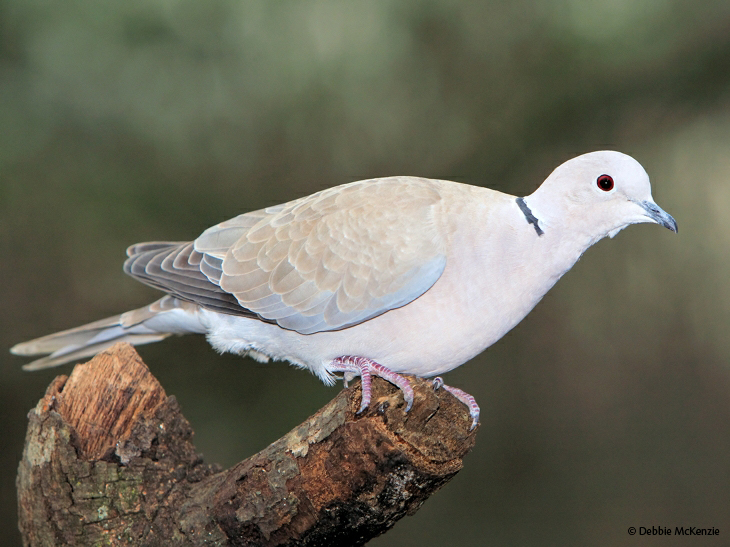 Photo ©
Debbie McKenzie
Photo ©
Debbie McKenzie
Be On the Lookout!
As the breeding season gets underway in the southern and western parts of the country, we are asking you to be on the lookout for Eurasian Collared-Dove nests this year. As you may be aware, a few Eurasian Collared-Doves were introduced to the Bahamas in the 1970s. They made their way to Florida by the 1980s and then rapidly colonized most of North America, especially areas converted to agriculture and urban uses. However, 30 years later, we still know very little about their breeding habits in North America.
In warmer regions, Eurasian Collared-Doves can nest year round, which may help explain their success as colonizers. But many questions remain unanswered, such as where, how often, and how successful is its breeding? Is there any change in its breeding strategies in this new range? And what are its effects on native species, particularly other doves?
If you find a Eurasian Collared-Dove nest, please report it to NestWatch. Eurasian Collared-Doves build a platform nest similar to that of our native Mourning Doves. The key to telling these two doves apart is the black crescent on the nape of the Collared-Dove’s neck, which is absent in the Mourning Dove. Be our eyes on the ground, and help us describe the species’ breeding biology in its newly colonized range!
 Photo ©
Photo ©